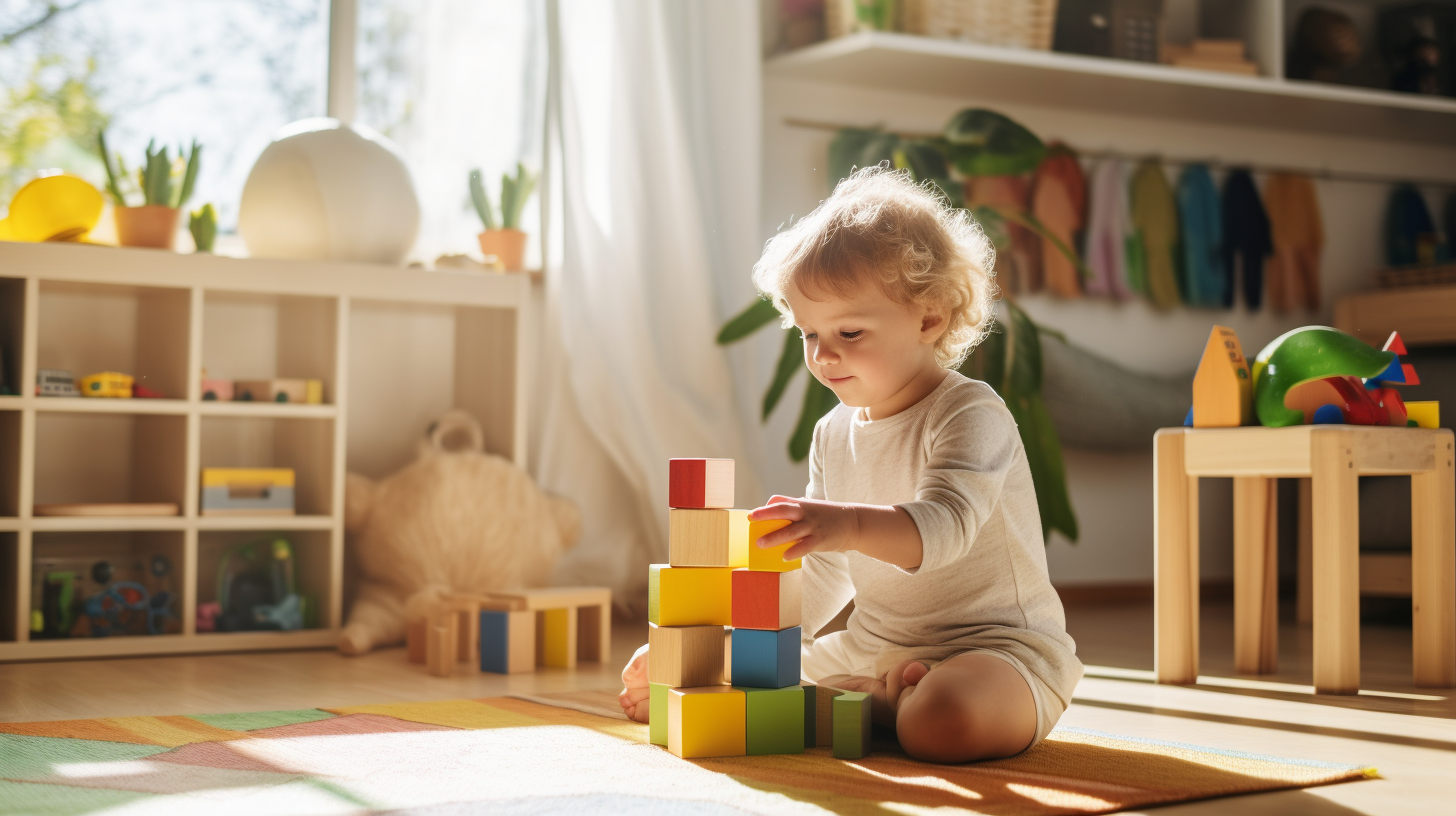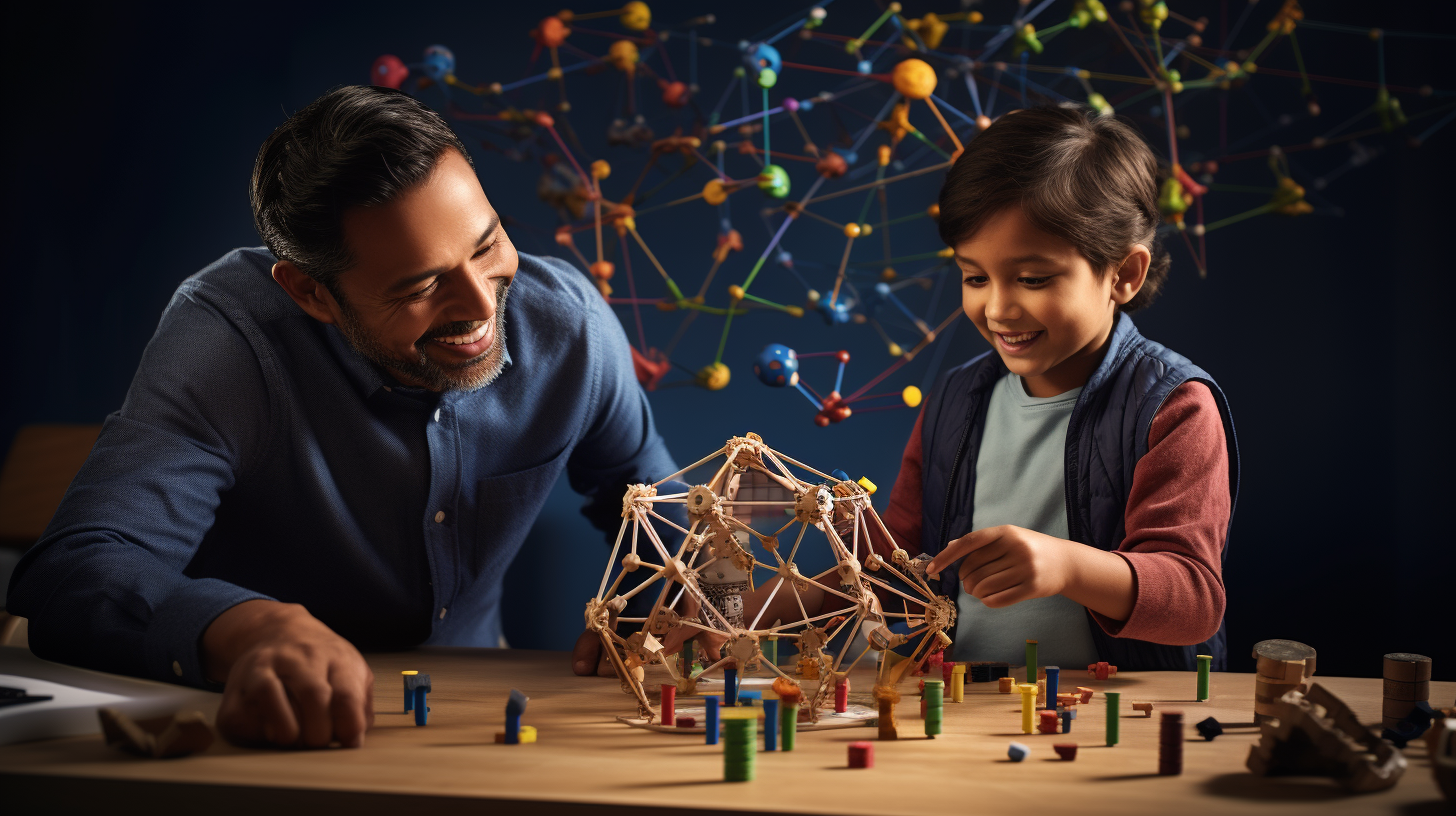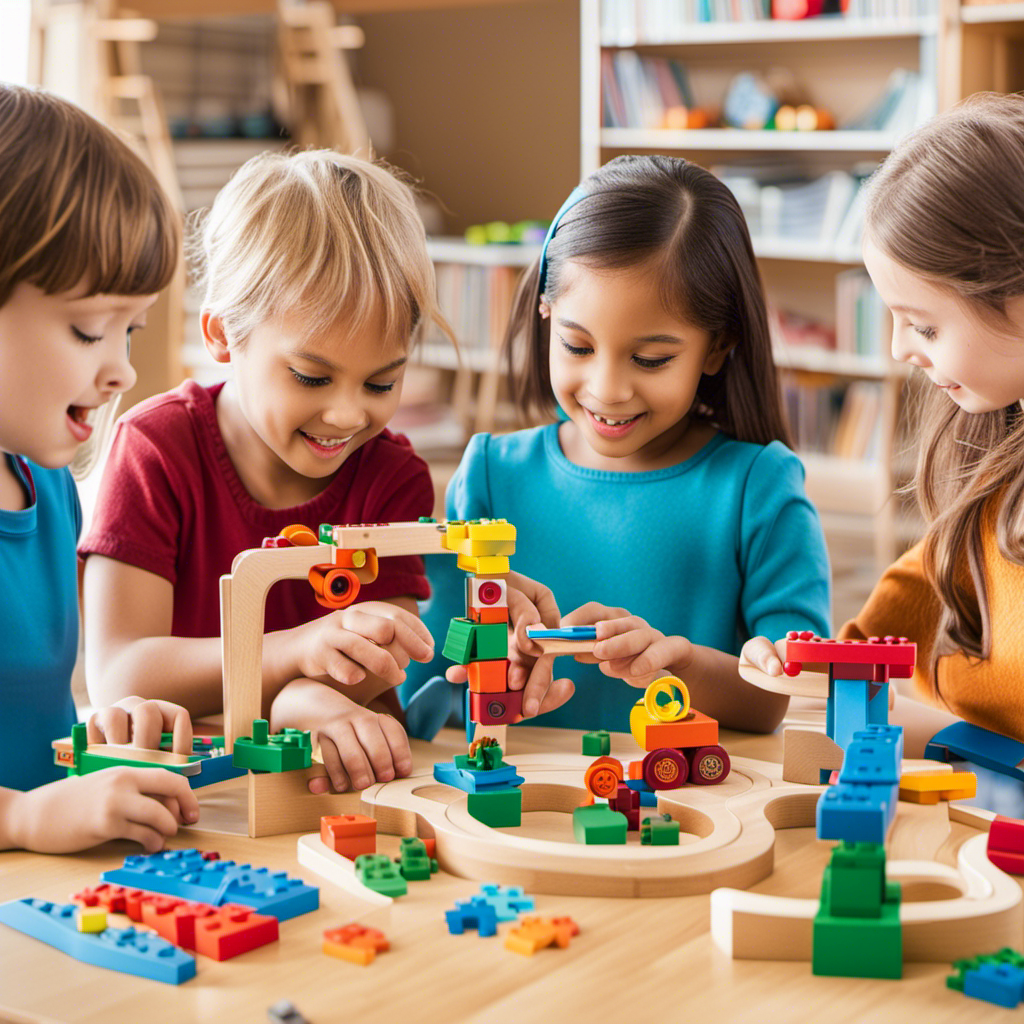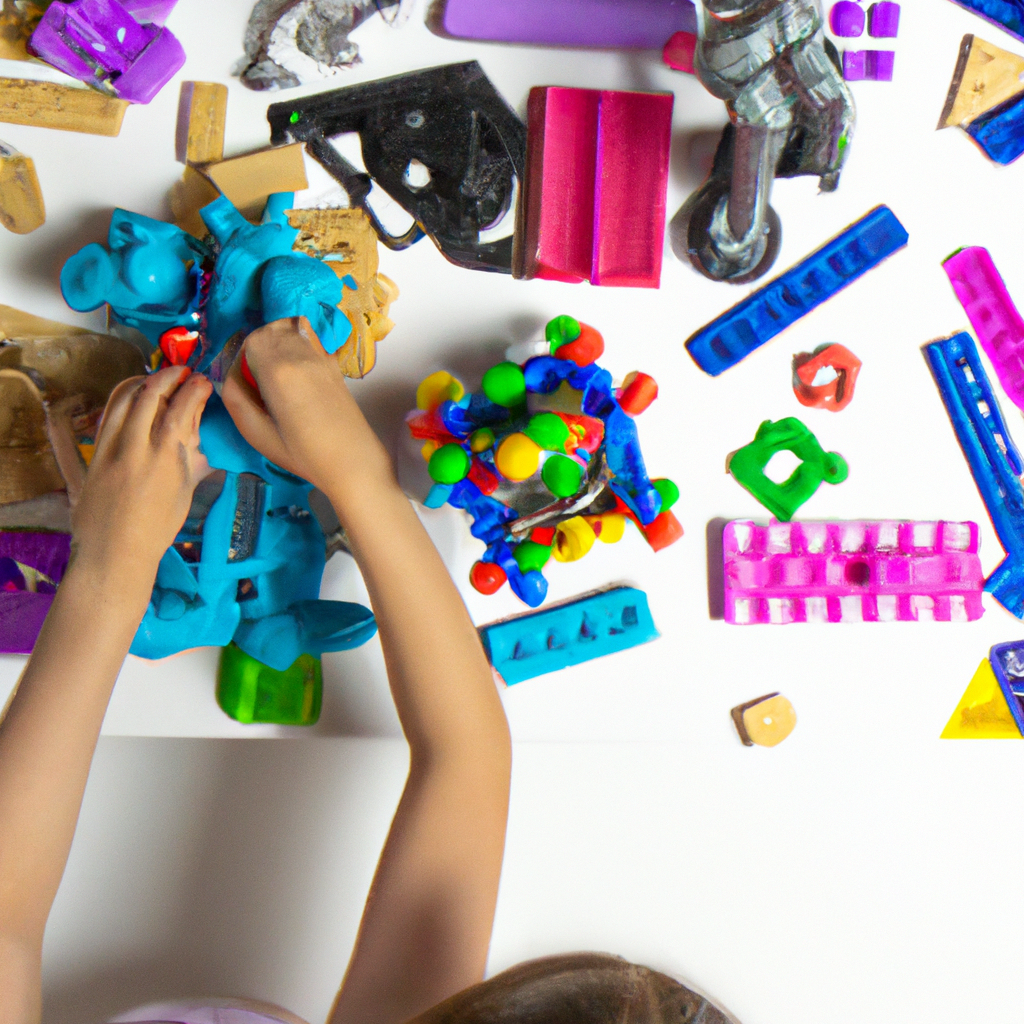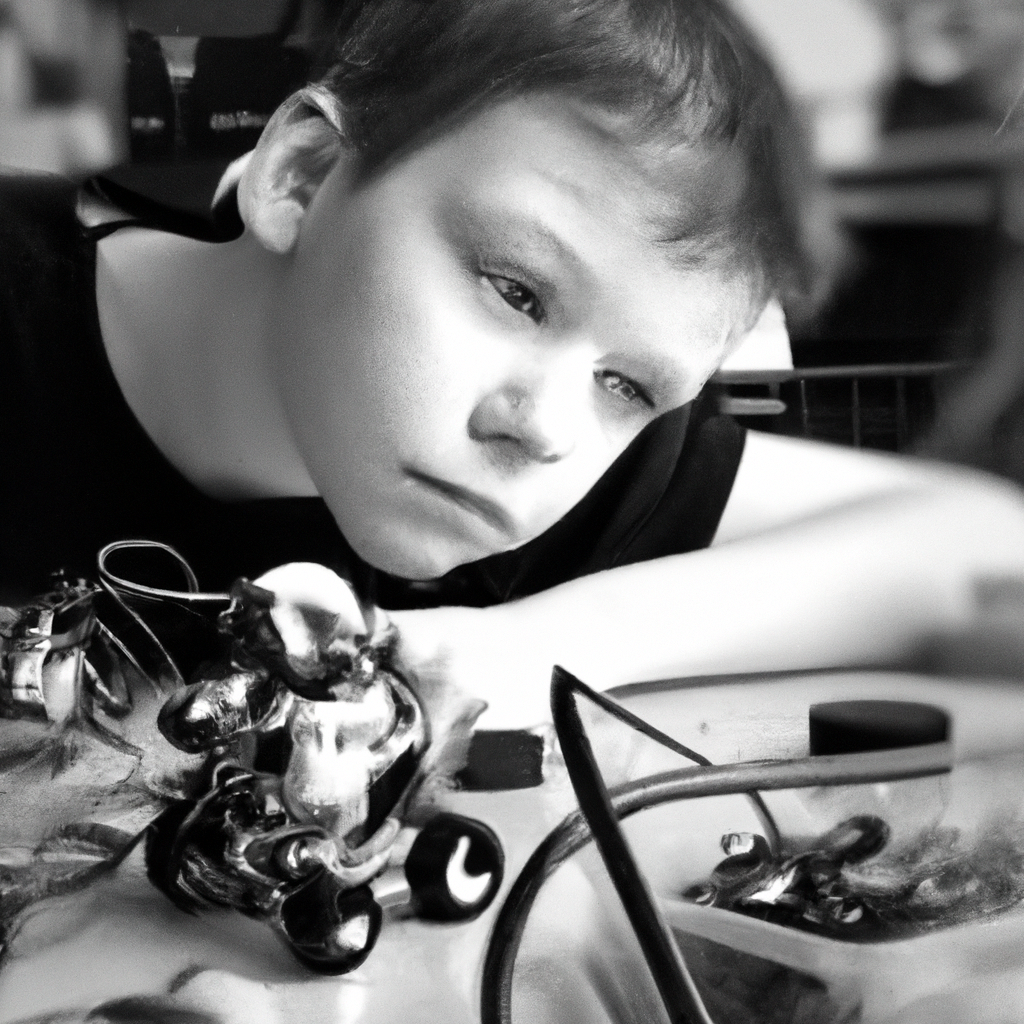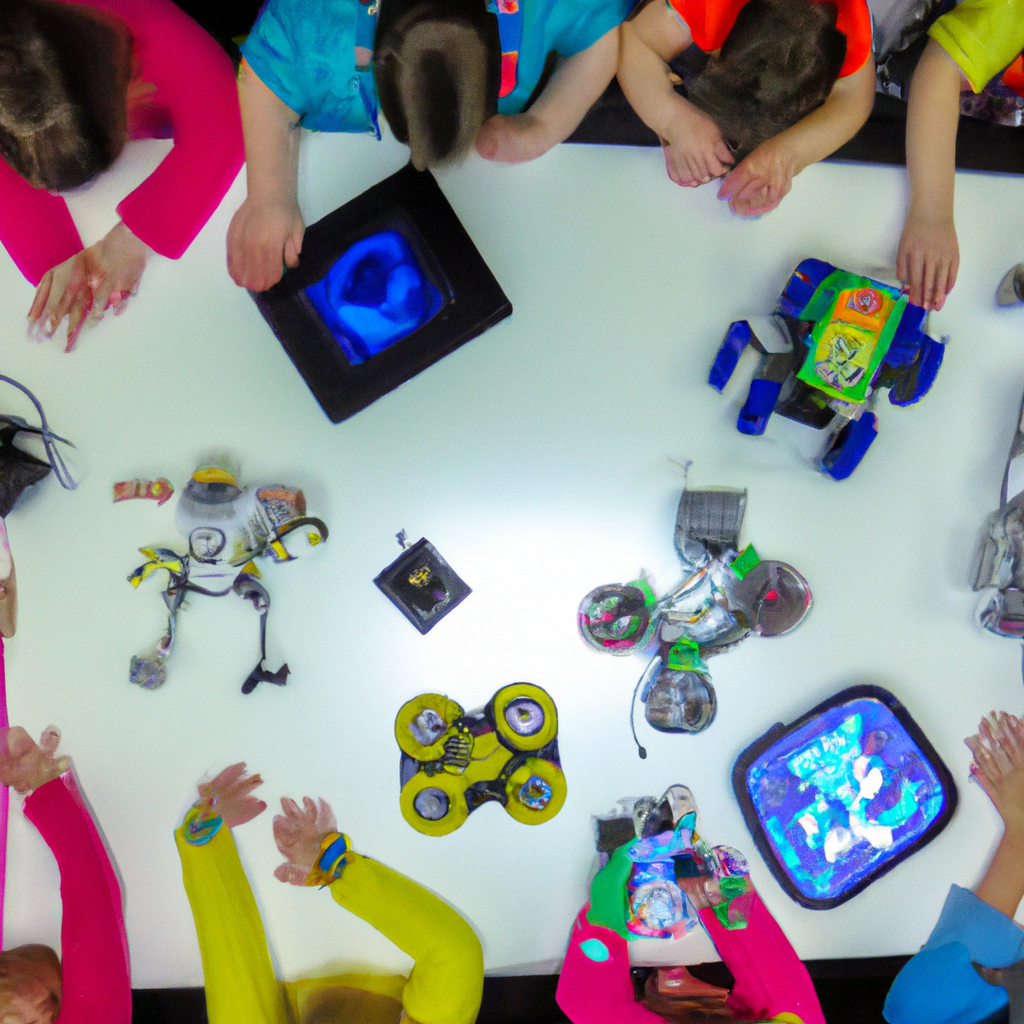As a parent, I am always looking for ways to encourage and stimulate my young child’s curious mind. That’s why I am thrilled to share with you my top picks for STEM adventures designed for 3-year-old geniuses.
By blending play and learning, these activities will ignite your child’s imagination and set them on a path of discovery. From coding games to engineering kits, puzzle games to sensory play activities, get ready to embark on an exciting journey of exploration and growth.
Key Takeaways
- Introduction to basic engineering and programming principles, including algorithms, debugging, variables, loops, and functions
- Engaging with robotics kits and puzzle games enhances problem-solving, logical thinking, critical thinking, creativity, and fosters innovation
- Building blocks help develop spatial reasoning, visualization, mental rotation abilities, and strengthen cognitive skills through planning and decision-making
- Incorporating activities like mind-bending puzzles, strategic games, and sensory play with DIY science projects improves memory, concentration, focus, and cognitive abilities
Building Blocks
Building blocks are a great way for 3-year-old prodigies to engage in hands-on learning. Block stacking allows children to develop their fine motor skills and hand-eye coordination. As they experiment with different arrangements and structures, they also learn about spatial awareness and problem-solving.
Through imaginative play, little ones can create their own worlds and stories using the blocks as their building materials. They can turn a simple tower into a castle or a spaceship, fostering their creativity and storytelling abilities.
Building blocks provide a sensory experience that stimulates their senses and enhances their cognitive development. These foundational skills acquired through block play can pave the way for future learning, including coding games where they can continue to explore and apply their problem-solving skills in a digital context.
Coding Games
Try out these coding games to introduce your little one to the world of programming and problem-solving. They’re not only fun but also provide an excellent opportunity for your child to develop critical thinking and logical reasoning skills.
Here are three coding challenges and programming puzzles that your little prodigy will enjoy:
- ‘Robot Turtles’: This board game teaches the basics of programming through a series of puzzles. Kids navigate their turtle through a maze using simple commands.
- ‘Code Master’: This game combines logic and coding to guide your child through a series of levels. They’ll learn programming concepts such as loops, conditionals, and functions.
- ‘Lightbot’: With this game, children solve puzzles by programming a robot to light up tiles. It introduces them to coding concepts like sequences, procedures, and loops.
Science Experiments
Engage your child in science experiments to foster their curiosity and love for the scientific process. Science experiments are a fantastic way to introduce children to the wonders of the natural world and encourage them to ask questions and seek answers.
DIY science projects allow kids to get hands-on and actively participate in the learning process. They can explore topics like chemistry, physics, biology, and more, all while having fun and being creative. From making volcanoes erupt to creating slime and growing crystals, there are endless possibilities for exciting and educational science experiments.
These activities not only stimulate their minds but also teach them valuable skills such as critical thinking, problem-solving, and observation. So, let’s dive into the world of science and inspire the next generation of young scientists!
And speaking of inspiring young minds, another great way to engage children in STEM is through engineering kits.
Engineering Kits
Engineering kits are a fantastic way to foster critical thinking and design skills in children. By providing them with hands-on projects and challenges, these kits encourage problem-solving and creative thinking.
Not only do they promote hands-on learning, but they also ignite creativity as children explore and experiment with different designs and solutions.
Foster Critical Thinking and Design Skills
Developing critical thinking and design skills is essential for young prodigies. It lays the foundation for their future success and fosters their ability to solve problems creatively. In early childhood, critical thinking is crucial as it helps children make sense of the world around them and develop a deeper understanding of concepts.
Design thinking for preschoolers goes hand in hand with critical thinking, as it encourages them to think critically about the design process and make informed decisions. Here are three ways to foster critical thinking and design skills in young children:
- Encourage open-ended play and exploration
- Provide opportunities for problem-solving and decision-making
- Engage children in hands-on design projects
Promote Hands-On Learning and Creativity
To promote hands-on learning and creativity, encourage your child to explore and experiment with different materials and tools. Provide them with a variety of resources to promote independent exploration, innovation, and imagination. Give them access to building blocks, art supplies, and even simple household objects like cardboard boxes or old buttons. Allow them to manipulate these materials freely, without strict guidelines or rules, enabling them to think creatively and problem-solve on their own.
Engaging in these activities will help develop important skills such as critical thinking, spatial awareness, and fine motor skills. These hands-on experiences will lay a strong foundation for future learning.
Speaking of hands-on activities, let’s now dive into the exciting world of math manipulatives.
Math Manipulatives
Math manipulatives can help young children develop a strong foundation in numerical concepts. These hands-on tools engage children in sensory play activities that make learning math fun and interactive. Manipulatives, such as counting blocks, number puzzles, and shape sorters, allow children to explore and manipulate objects while learning mathematical concepts like counting, sorting, and pattern recognition.
By using their senses to touch, move, and arrange these manipulatives, children develop a deeper understanding of numbers and mathematical relationships. Sensory play with math manipulatives also helps to strengthen fine motor skills and hand-eye coordination. As children engage in these activities, they become more confident in their abilities to solve problems and think critically.
Now, let’s transition into the next section about nature exploration, where young prodigies can embark on exciting adventures in the great outdoors.
Nature Exploration
After diving into the world of math manipulatives, let’s now shift our focus to the great outdoors.
Outdoor exploration is not only a fantastic way to engage young minds but also an opportunity to connect with nature. It encourages children to use their senses, observe their surroundings, and develop a sense of wonder.
Nature crafts, in particular, provide a hands-on experience that combines creativity with the beauty of the natural world. From leaf rubbings to pinecone bird feeders, these crafts allow children to explore different textures, colors, and shapes while fostering their appreciation for the environment.
By encouraging outdoor exploration and engaging in nature crafts, we can help our little prodigies develop a love for the world around them.
So let’s step into the world of robotics kits and discover how they can further enhance our children’s learning journey.
Robotics Kits
When it comes to robotics kits, they offer an excellent opportunity to introduce basic engineering and programming principles to young minds.
These kits provide hands-on experience in building and coding robots, allowing children to explore the world of technology in a fun and interactive way.
Additionally, engaging with robotics kits can enhance problem-solving and logical thinking skills, as children learn to troubleshoot and debug their creations, fostering critical thinking abilities that are valuable in various domains.
Introduce Basic Engineering and Programming Principles
Let’s start by introducing your little prodigy to basic engineering and programming principles. This early exposure to coding concepts will not only ignite their curiosity but also teach them valuable problem-solving techniques. By understanding the fundamentals of engineering and programming, children can develop a strong foundation for future STEM exploration.
To help you get started, here’s a handy table showcasing some key concepts and activities you can incorporate into your child’s learning journey:
| Concept | Activity | Benefits |
|---|---|---|
| Algorithms | Create a step-by-step recipe | Develops logical thinking and sequencing |
| Debugging | Fix a broken toy or puzzle | Encourages perseverance and critical thinking |
| Variables | Sort objects by size or color | Enhances categorization and pattern recognition |
| Loops | Play a repeating song or game | Fosters understanding of repetition and patterns |
| Functions | Build a tower using different blocks | Promotes modularity and abstraction |
Enhance Problem-Solving and Logical Thinking Skills
After laying the foundation of basic engineering and programming principles, it’s time to take your little prodigy’s skills to the next level. Enhancing problem-solving and logical thinking skills is crucial for their cognitive development. This is where critical thinking exercises and problem-solving games come into play. These activities not only engage their minds but also provide an opportunity to think critically and find creative solutions.
Here are three ways these exercises can help your child:
- Developing analytical skills: By engaging in problem-solving games, your child learns to analyze situations, identify patterns, and think logically.
- Improving decision-making abilities: Critical thinking exercises teach your child to evaluate options, consider consequences, and make informed decisions.
- Boosting creativity: Encouraging your child to solve problems using different approaches fosters their creativity and helps them think outside the box.
With these enhanced problem-solving and logical thinking skills, your little prodigy will be ready to tackle the next challenge: puzzle games that will further stimulate their brilliant mind.
Puzzle Games
Puzzle games are not only a fun and entertaining way to spend our time, but they also have numerous benefits for our brain.
One of the key points is that they help develop spatial reasoning and cognitive skills. By solving puzzles, we have to think critically, analyze patterns, and visualize the different pieces fitting together, which improves our problem-solving abilities.
Additionally, puzzle games can also enhance memory and concentration as they require us to focus, remember information, and recall it later on.
Develop Spatial Reasoning and Cognitive Skills
Playing with building blocks can help toddlers develop spatial reasoning and cognitive skills. Spatial reasoning in early childhood is crucial for understanding how objects relate to one another in space and can lay the foundation for later math and science learning.
As children manipulate and arrange blocks, they learn to visualize and mentally rotate objects, enhancing their spatial reasoning abilities. Additionally, engaging in block play promotes cognitive development in preschoolers by encouraging problem-solving, critical thinking, and creativity.
Building structures with blocks requires planning and decision-making, which strengthens their cognitive skills. By exploring different shapes, sizes, and colors, children develop their visual perception and attention to detail. As a result, they become more adept at recognizing patterns, organizing information, and solving complex tasks.
This foundation in spatial reasoning and cognitive skills sets the stage for further learning and exploration in other areas, such as improving memory and concentration.
Improve Memory and Concentration
To improve your memory and concentration, try incorporating activities that challenge your brain, such as solving puzzles or engaging in strategic games. These activities not only provide entertainment but also serve as effective memory techniques.
Here are two sub-lists of activities that can help improve focus and boost your memory:
- Mind-bending puzzles:
- Crossword puzzles: These stimulate the brain by requiring you to recall and connect words.
- Sudoku: This number-based puzzle enhances logical thinking and memory skills.
- Strategic games:
- Chess: This game requires critical thinking, planning, and memory recall.
- Memory matching games: These games improve concentration and memory by challenging you to remember patterns and locations.
By incorporating these memory-enhancing activities into your routine, you can improve your focus and cognitive abilities.
Now, let’s explore the exciting world of sensory play activities that will engage your child’s senses and foster their learning and development.
Sensory Play Activities
Try out these sensory play activities to engage your little prodigy’s senses and encourage their cognitive development.
Messy play is a fantastic way for children to explore different textures, colors, and materials. Set up a sensory bin filled with rice, beans, or even water beads and let your child dig in with their hands or use tools like spoons and cups. This hands-on experience stimulates their tactile senses and promotes fine motor skills.
Sensory bins can also be themed, such as a construction site or a farm, allowing your child to engage in imaginative play while discovering new textures.
As their curiosity grows, they’ll be ready for the next adventure: DIY science projects. These activities will continue to fuel their love for learning and exploration.
DIY Science Projects
You can create simple science experiments using household items to spark your child’s curiosity and foster their love for hands-on learning. DIY science projects are a great way to engage children in the wonders of the world around them. Here are some ideas to get you started:
- DIY Slime:
Mix together glue, water, and borax to create a gooey and colorful slime.
Experiment with different ratios of ingredients to see how it affects the texture and consistency of the slime.
Add glitter, food coloring, or small toys to make the slime even more exciting. - Kitchen Experiments:
Create a volcano using baking soda and vinegar for a fun and explosive reaction.
Make a homemade lava lamp by combining oil, water, food coloring, and an effervescent tablet.
Grow your own crystals by dissolving salt or sugar in warm water and letting it evaporate slowly.
These DIY science projects will not only entertain your child, but also teach them valuable lessons about chemistry, physics, and the scientific method. So grab some household items and let the scientific adventures begin!
Frequently Asked Questions
Are these STEM adventures suitable for children older than 3 years old?
Yes, these STEM adventures are suitable for children older than 3 years old. They offer age-appropriate challenges and engaging activities for older kids, ensuring a fun and educational experience for all.
Can these STEM adventures be done independently or do they require adult supervision?
These STEM adventures can be done independently by 3-year-old prodigies, but adult supervision may be necessary for some activities. It’s important to ensure the child’s safety and provide guidance when needed to enhance their learning experience.
Are there any potential safety hazards associated with these STEM adventures?
Potential safety hazards with STEM adventures include small parts that could pose a choking hazard, sharp tools that could cause injury, and chemicals that may be harmful if ingested. Adult supervision is crucial to ensure a safe and educational experience.
Are the materials required for these STEM adventures easily accessible or do they need to be purchased separately?
The materials required for these STEM adventures are easily accessible and can be found at home or purchased separately. The cost of materials varies depending on the specific adventure, but they are generally affordable and readily available.
Are there any specific skills or knowledge that children can expect to gain from participating in these STEM adventures?
Skills gained and knowledge acquired through STEM Adventures include critical thinking, problem-solving, and creativity. Children will develop a solid foundation in science, technology, engineering, and math, setting them up for future success in these fields.
Conclusion
In conclusion, introducing STEM activities to 3-year-old prodigies can have a profound impact on their development. Research has shown that children who engage in STEM-related play at a young age are more likely to develop critical thinking skills, problem-solving abilities, and a love for learning.
In fact, a recent study found that children who were exposed to STEM activities before the age of 5 were 32% more likely to pursue a STEM-related career in the future. So why wait? Start exploring the world of STEM with your little one today and watch them thrive!
